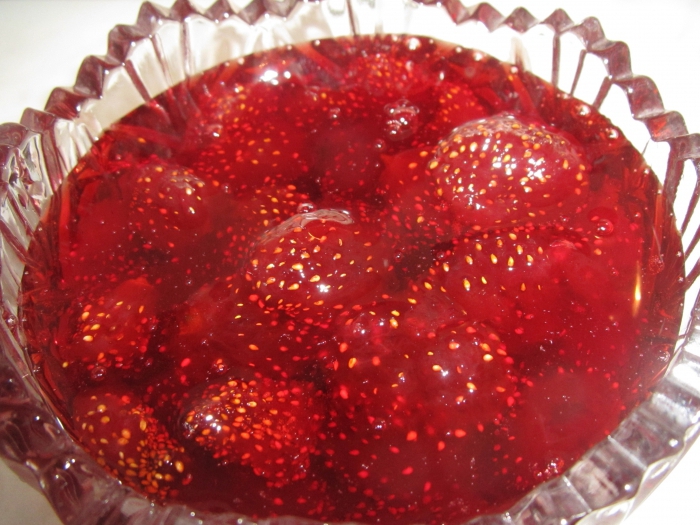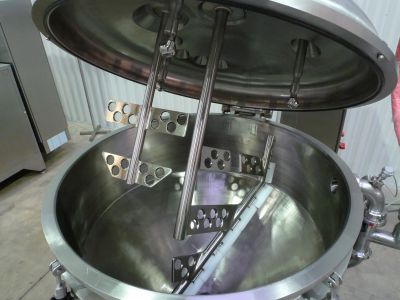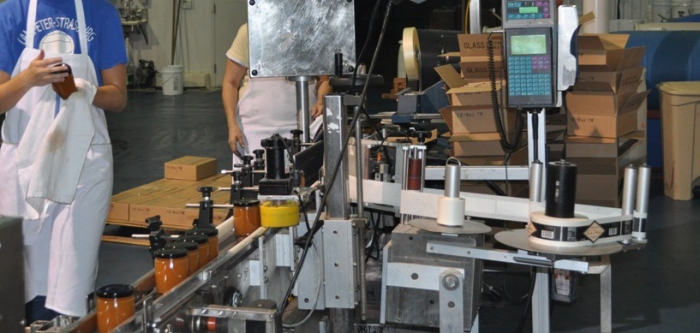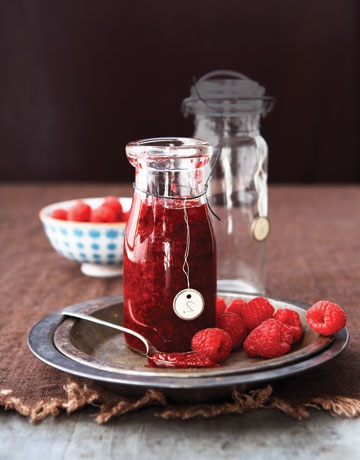 From early childhood, with colds, mothers give children hot tea, in which they add natural jam, most often raspberry or currant. This tasty remedy has long been considered the first medicine for colds and flu.
From early childhood, with colds, mothers give children hot tea, in which they add natural jam, most often raspberry or currant. This tasty remedy has long been considered the first medicine for colds and flu.
Many types of jam contain natural salicylic acid, which is the main component of anti-inflammatory or antipyretic drugs. In addition, they have many vitamins and other beneficial substances.
Preservation of fruit crops at home was previously quite common. Many women made jams, jam, jams, procuring them for the future for the winter, but over time, this tradition gradually began to fade.
And although canned products today have not lost their popularity, however, the majority prefers to buy them already in the store, without wasting their time and effort on laborious manufacture. That is why the production of preserves and other types of natural canned products has become a very promising and profitable business today, which does not require a lot of money to organize.
Business plan
Berry processing, which consists in making jam from environmentally friendly products without the addition of flavorings, has an ever-growing demand. And this is not surprising. Today's buyer wants to buy only healthy and natural products. Therefore, the production and sale of jam from berries and fruits has become for some of one of the promising areas of entrepreneurial activity. Today, you can build a profitable home business on this.
Market of canned food from environmentally friendly raw materials
Jam production refers to the segment of production and sale of environmental products, which has great prospects in agriculture around the world. However, in the Russian market, natural pure products do not have enough share in the general market, and most of them are of imported origin. It is assumed that in the coming years the picture will change, and the share of products of Russian manufacturers will reach sixty percent.
Potential buyers are mainly the urban population. At the same time, the main ways of selling jam are deliveries to grocery supermarkets, which, as a rule, are aimed at representatives of the middle class.
Jam production technology

Jam production is made from various berries, rose petals, melons, walnuts, etc., cooked in sugar syrup. You can use fresh fruits, and frozen or already processed.
Jam differs from other related canned products in consistency: berries and their parts in it preserve their integrity as much as possible. This is achieved as a result of two, sometimes three boiling processes.
According to the technology, much attention is paid to the quality of raw materials: only ripe and undamaged fruits should be selected for high-quality jam, and only high-grade sugar should be selected for syrup, the content of which in the finished product should be at least seventy percent, otherwise the preserved jam will quickly deteriorate.
Main steps
The production of jam includes the following steps:
- preparation of berries and fruits;
- processing;
- container sterilization;
- packaging of jam;
- packaging.
However, it is not necessary to create original recipes.For example, the production of raspberry jam can be done according to a recipe that came from Soviet times. Although some manufacturers position their product as “created according to old traditional recipes,” this is rarely the case.
Moreover, despite the apparent simplicity, the process of obtaining jam has certain nuances. Based on the requirements for product quality, berries and fruits or their segments in the composition of the obtained canned food must be intact, retaining its original shape. At the same time, the volume of fruits during cooking should not change much.
For high-quality jam, you need to select only strong and whole fruits. Depending on the type of raw materials used, the requirements also change. For example, the fruits of plums and cherries should be ripe, so that the jam does not have an unpleasant sour taste, and strawberries, raspberries or pears, on the contrary, should be used a little immature, since they can quickly boil and not retain their shape. Therefore, it is very useful to cooperate with such a supplier of raw materials, who will be aware of all the necessary requirements.
Equipment
In order to establish the production of jam, you need, having decided on the premises, after preparing the documentation and obtaining a license and permits, proceed to the arrangement of the workshop.

To do this, you need a cutting table, on which raw materials will be processed, and a washing bath. Processing of berries is carried out in a special installation for production, after which the resulting product is poured already in the tank.
To sterilize the jam, you will need to purchase an ultraviolet water sterilizer, and you will also need a similar device for cans with lids. It will be necessary to purchase a special unit that rinses the cans. Packing and corking of ready-to-eat canned products must be carried out using the installation for filling finished products. A special machine glues labels to cans.
In addition, you need to take care of auxiliary equipment - scales, a sifter for granulated sugar, trays, containers, special containers and so on. In the workshop must be present freezers and refrigerators, ensuring the safety of both raw materials and the finished product.
Production area and transport
Jam production requires premises with an area of more than eighty square meters and personnel (at least ten employees). A properly organized enterprise will pay off in twenty-four months. To transport finished products, you need to buy or rent a small-capacity freight transport with an insulated van.

Cost calculation
The minimum cost of the entire set of equipment for a workshop with low productivity, for example, about one and a half thousand kilograms per shift, will be from two to two and a half million rubles. This also includes the rental or repair of premises for the organization of food production, as well as the purchase of the first batch of raw materials, the purchase of vehicles, the design of packaging and labels, and, finally, a two-month salary of up to ten workers per shift.
The payback period of a competent working business is a maximum of two years. It should be borne in mind that jam, like other fruit and berry preparations, is a seasonal product that is most in demand in the winter, until the end of spring. In the summer, there is a decline in sales, since consumers prefer to buy only fresh fruits and vegetables at this time, rather than canned ones. But, on the other hand, summer is a season when you need to harvest berries and fruits and start harvesting, so that by autumn you already have finished products.
Nuances
To increase the shelf life, jam is packaged in special containers.If earlier metal lacquered or solid aluminum cans were used for this, today natural jams and jams are mainly packaged in glass jars or in containers made of thermoplastic polymeric material.
Regardless of which packaging for the finished product is used, it must necessarily indicate the trademark, the name of the product and the manufacturer, as well as its mailing address. The composition of the jam, the net weight, the production date with a shelf life, and information about the energy value of one hundred grams of the product should be clearly visible on the label. In addition, certification information must also be indicated on the packaging.
Storage and quality control
Ready jam, according to the rules, in an unpressurized container can be stored at an air humidity of not more than seventy-five percent and a temperature of up to twenty degrees for sterilized products and fifteen for unsterilized products. Warranty periods are considered from the day of its development.
Sanitary and Epidemiological Requirements
The quality of jam is evaluated according to GOST R 53118-2008. The monitoring of the presence of various toxic elements in the food product and its microbiological indicators in accordance with the current procedure is carried out by the manufacturer in consultation with the State Sanitary and Epidemiological Supervision.
The quality of water in water supply systems in the production of jam should meet the requirements for water in centralized drinking water supply systems. Workshops, washing, loading, storage room food waste must be equipped with drains. Working conditions for workers should be organized based on occupational health standards approved by the SES.
Mini business at home
Even a housewife can make small jam production. An individual mini line consists of affordable equipment for everyone. A good sealed key microwave oven is all you need to equip a home factory. The main thing in this dessert production will be a microwave microwave oven, which performs two functions at once: the cooking process and sterilization.










and product packaging in mini packaging from 20ig to 200mg
filling line up to 500 kg per shift